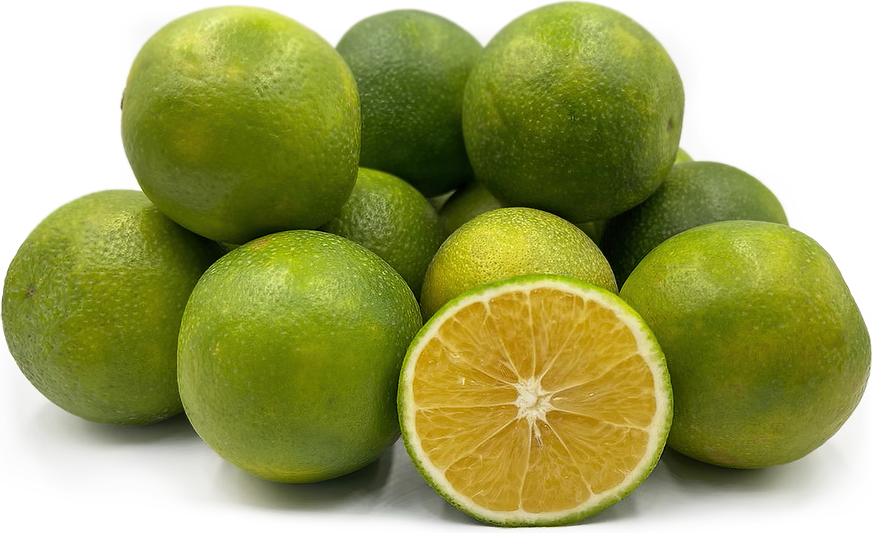


Mosambi
Estimated Inventory, lb : 0
Description/Taste
Mosambi is small to medium in size, averaging seven centimeters in diameter, and is round to oval in shape with a slightly lumpy exterior. The medium-thick, leathery rind has many small, prominent oil glands and transforms from green to a blend of yellow, orange, and green hues when mature. The rind is also full of essential oils, and just one scratch on the surface of the peel will release an intense, bright aroma. Underneath the surface of the rind, the white pith clings to the flesh and has a spongy texture. The flesh is soft, juicy, contains many cream-colored seeds, and is divided into 8-10 segments by thin membranes. Mosambi is generally sweet with a mild flavor and contains a low amount of acid, reducing tart and tangy notes.
Seasons/Availability
Mosambi is available in the summer and again in the winter through early spring.
Current Facts
Mosambi, botanically classified as Citrus limetta, is a small fruit that grows on evergreen trees reaching eight meters in height and belongs to the Rutaceae or citrus family. Also known as the Mediterranean lime, Palestine lime, Sweet lemon, and Mitha Nimboo in India, Mosambi citrus is a general term used to describe many different varieties of sweetly flavored lemons grown in the Mediterranean basin, Middle East, India, and Southeast Asia. Favored by home cooks for its sweet flavor, Mosambi is predominately used for its juice and is used as a cooling drink and flavoring for both sweet and savory culinary dishes.
Nutritional Value
Mosambi is a good source of vitamin C and potassium and also contains some fiber, magnesium, iron, phosphorus, and calcium.
Applications
Mosambi is best suited for raw applications as its sweet flavor is showcased when juiced. When preparing the juice, the fruit is sliced, de-seeded, peeled, and blended with water and sugar to create a sweet and refreshing drink. The juice can also be used for meat, chicken, and fish marinades, blended into salad dressings, made into popsicles, cooked into jams, jellies, and syrups, used in sorbet, used to flavor candies, and mixed into a variety of beverages such as iced tea. It is important to note that Mosambi juice will become bitter quickly and must be consumed within hours of juicing. Mosambi citrus pairs well with coconut, strawberry, orange, mango, banana, watermelon, cranberry, kiwi, lemon, lime, calamondin, kumquats, ginger, basil, and mint. The fruit will keep up to two weeks when stored at room temperature and 4-8 weeks when stored in the refrigerator.
Ethnic/Cultural Info
In India, according to the Ayurvedic method, Mosambi can be used to help aid in ailments of the nervous system and to help with nausea or fever. Mosambi juice is considered beneficial in a regular diet and is commonly prescribed to sick patients by their doctors. Throughout India, you can also find Mosambi juice sold on street corners. Chaat masala, which is a spice mix including cumin, coriander, ginger, black pepper, chili powder, and dried mango powder, is commonly added to the juice to create a mix of sweet, salty, and spicy flavors.
Geography/History
Mosambi is native to northern India, specifically Nagaland and Meghalaya, and has been found growing wild since ancient times. The fruit was then spread across Asia and into Europe via trade routes and to the United States around the turn of the 19th century. Today Mosambi is mostly cultivated as a specialty home garden plant in Florida and California in the United States, but it can also be found growing in Southeast Asia, India, Egypt, Pakistan, Syria, and the Mediterranean.
Recipe Ideas
Recipes that include Mosambi. One
| You Too Can Cook |
|
Mosambi Peda |




